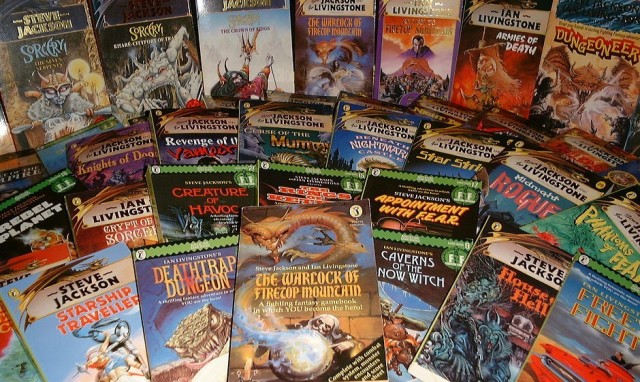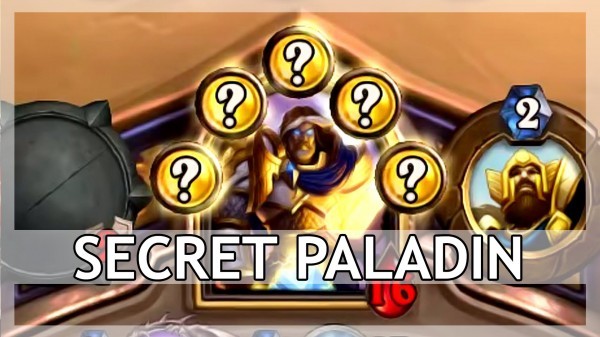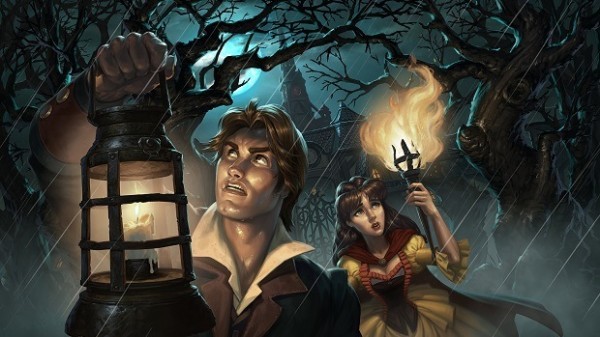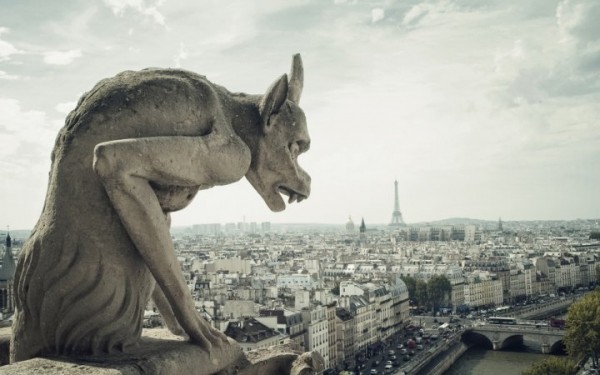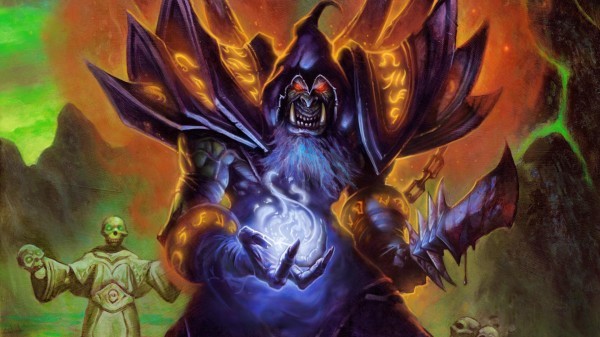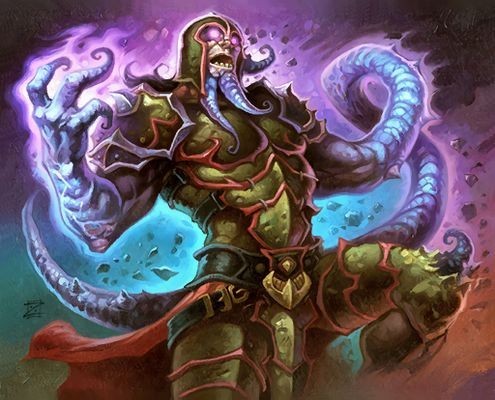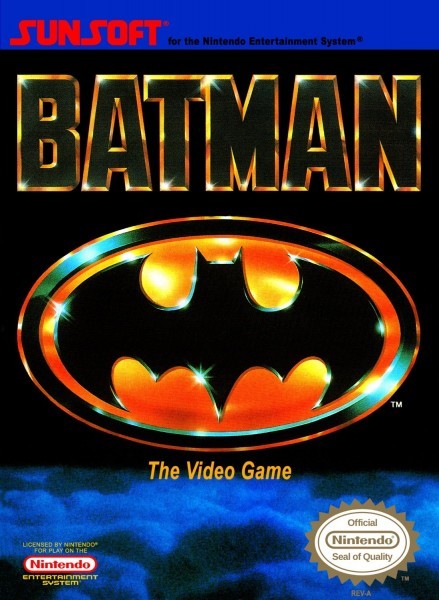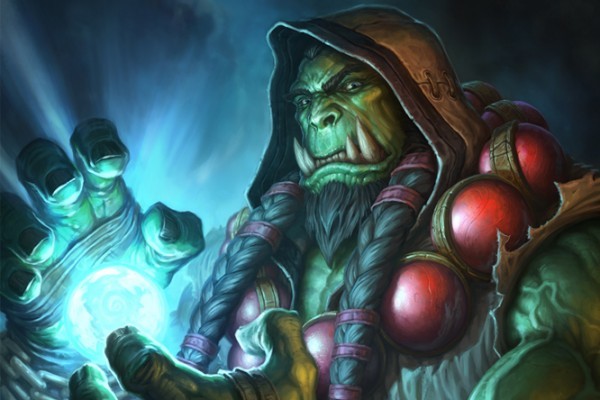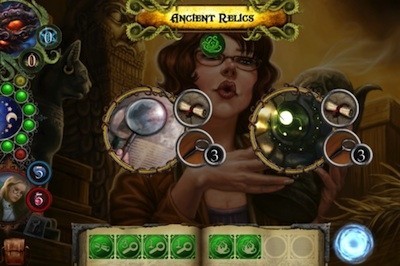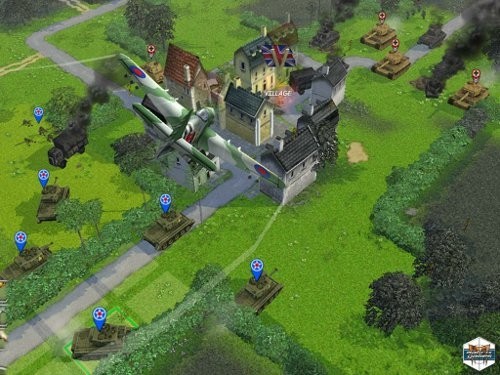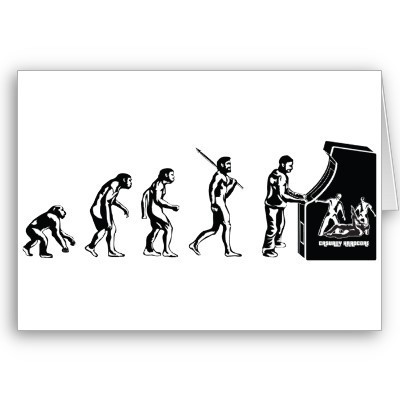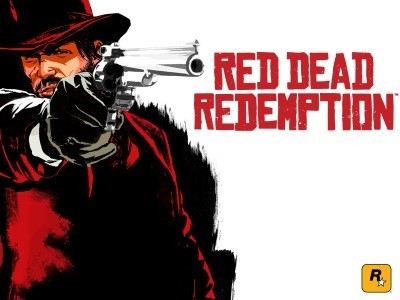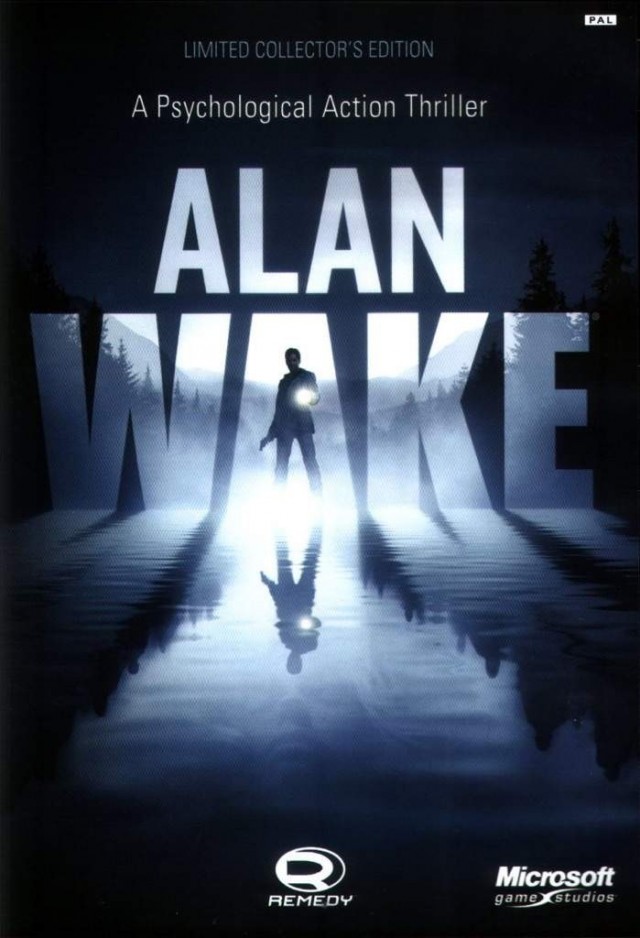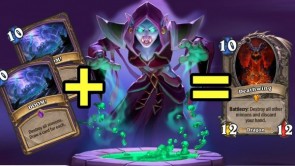Nerfs are imminent for Hearthstone.
Team 5 is notorious among Blizzard's game "teams". The rest of Blizzard's franchises (World of Warcraft, Starcraft, Diablo, Heroes of the Storm, Overwatch) make regular balance changes to their games, tweaking abilities here, changing health pools there, etc. Some of them do updates as frequently as weekly and are quick to descend on any obviously problematic situations (Witness: the 48-hour cycle of Zarya when first released into Heroes- from useless to godlike to balanced in two days.) Team 5 is... not that way. Despite the prevailing thought amongst the player base that being a digital card game gives HS the freedom to not have to live with sorely unbalanced situations for months on end (Skullclamp, anyone?), Team 5 has repeatedly stated that they will only alter cards as a last resort, either because of longstanding dominance/universal inclusion, as was the case with Fiery War Axe, or because of a meta that simply won't "solve itself." Team 5's design philosophy is that most card pools should have enough answers in them to counter-balance what seems to be the dominant deck and/or class. Once people find the right list, then the overall meta should adjust as one deck answers another and the carousel goes 'round until the next expansion is released to turn it upside down again.
But that's not always how this works.
A few cards from Kobolds and Catacombs have proven to be so dominant that not only are decks from that Standard meta largely the same, but they're largely the same after half the card pool was removed and replaced with The Witchwood. That sameness has also resulted in most cards from The Witchwood being ignored because almost nothing that the new set brought made any real change necessary to what had gone before (with one fairly glaring exception.) Having people ignore your brand new set isn't a good thing, either from a sales standpoint or that of variety, since the latter means that everyone is essentially playing the same game since November and will be until August if Blizzard hews to the same release schedule as before.
So last week, Blizzard announced that some changes will be made. Said changes will likely be taking place tomorrow (Tuesday) or Thursday, given Hearthstone's typical patching schedule. Whether said changes will have the impact that Blizzard expects is open to question, but I'm here to take a look and give my own carefully biased opinion.
We'll start with the one Wild format change, since I don't play Wild:
Naga Sea Witch: Mana cost changing from 5 to 8.
That's, quite obviously, a HUGE change. Most of the time (as we'll see) mana costs change by one point and still have a significant impact on a card's viability and play rate. But Naga Sea Witch has been dominating Wild play for quite some time and has resulted in a deck that can produce multiple Giants (Molten, Mountain, Arcane, etc.) very early in the game and without a way for even Wild decks to respond effectively. Slowing down NSW's appearance by three turns (or, you know, one turn if you're playing Druid) introduces the opportunity for a lot of different answers (like, say, Twisting Nether) to become available.
Spiteful Summoner: Mana cost changing from 6 to 7.
As noted, here's your typical mana cost change. Team 5's assertion is that slowing down Spiteful's appearance by a turn not only enables more answers to be drawn by the opponent, but also raises the possibility that the Spiteful player will draw one of the spells that he or she is hoping to use with the Summoner to bring in a giant minion. If the spell(s) is in your hand, your Summoner becomes a severely overcosted 4/4. The problem is that this change isn't really targeted at the most notorious example of this deck that is currently the most popular: Spiteful Druid. Druid has several methods of mana acceleration, so adding one more mana makes them the last class to likely be impacted by this change. It's true that most of those mana ramp methods involve low-cost spells that you don't want to be playing in a Spiteful Deck (Wild Growth, Innervate), but there is still the tolerable Nourish (4/4 and a 5-cost for 7 mana) and there's also Greedy Sprite, which won't interrupt your targeting of Ultimate Infestation, which is what you're really trying to get with the Summoner. But the larger problem isn't really the one extra turn that Summoner requires, but the three extra turns in which it has Tyrantus on the board. When the rotation to the Year of the Raven took place, a lot of 10-cost minions that are underwhelming in stats (Old Gods N'Zoth and C'thun, for example) left Standard. That reduced the pool of huge minions overall and particularly for Druid, since cards like Summoner tend to emphasize minions that the class could normally play. Tyrantus is a 12/12 untargetable. Only a few cards can answer him (Psychic Scream, Twisting Nether, Voodoo Doll (plus a way to get rid of it), BGH.) If you don't have one of those, you have to hope to draw one in the next two turns or you've just lost the game on a random die roll. Maybe waiting one more turn will be enough to give you that opportunity, on average, but I still think that one of the other suggested solutions (like discarding the spell used by Summoner) would have been a better approach to a card that emphasizes all of the worst aspects of Hearthstone's RNG that Team 5 remains so enamored of and much of the player base is not.
Dark Pact: Restores 4 health, instead of 8.
Changing Pact (and the next card) seems to buttress my opinion that the real problem with Cubelock decks isn't Cube. After all, if Cube were the terror that many people insist that it is, it would be present in multiple classes and multiple decks; most prominently Quest Priest, where it is utterly absent. It's not the Cube that's the problem. It's the enablers, most notable among which is Dark Pact. Back when Kobolds was previewed, a fair number of prominent streamers pointed out that the card was hugely powerful. It's cheap. It's easy to apply regardless of what type of deck you're playing. And it compensates for the one downside of the best hero power in the game. Indeed, its most frequent application is around turn 5 or 6 where it is used to recover all of the health that the Warlock player has spent the last 4 turns using to draw cards. That's, uh, not how that's supposed to work. So, now it only heals for half as much, putting it in the same realm as many other healing spells that don't get used in the game (Holy Light.) However, the difference remains: it's still a very cheap enabler for other strategies and still tends to leave Warlock in a position where it can simply do everything better (draw, heal, board clear, single-target removal, reload) than every other class in the game. Only getting half the health back is a step forward for everyone else. The fact that it can be used to regain that health while spitting out two Voidlords is something that everyone is going to have to continue to lose again- uh, live with.
Possessed Lackey: Mana cost changing from 5 to 6.
And this is why that strategy will still be viable. Yes, it will be a turn slower, which means the Lackey will bring out a 9-cost Voidlord on turn 6 with Coin, rather than turn 5. That's still three turns earlier than such a minion should be played, which is kind of the defining aspect of Kobolds and Catacombs and fully half the cards being discussed here: getting minions for free. Lackey was derided when first previewed, because no one could fathom the idea of paying 5 mana for a 2/2. But it took only a couple days for the Warlock decks running Voidlords and Doomguards to come to fruition. Waiting until turn 9 to play a Voidlord can be difficult if facing an aggro deck. No one wants to play Doomguard because of the awful Discard mechanic. But having a way to sneak out both of them without really paying their costs? Sign me (read: everyone) up! (Not to mention further weakening Shaman Evolve decks, since those were running rampant across the meta, amirite?) At this point, decks playing Lackey, Spiteful Summoner, and Call to Arms are essentially cheating. They're not paying the MSRP for the cards that they're playing. That seems to be an unbalancing effect on its face, so I'm not quite sure what Team 5's design goal was in this instance. Sure, Spiteful feeds their RNG jones, but Lackey's application is both direct and obvious. There's no "exciting" or "replayability" aspect here. In fact, most Warlock opponents would say that they're quite bored with trying to hammer their way through Voidlords by now. Slowing down their arrival by a turn may have the impact that Blizzard wants, but I find it hard to believe that this cost increase serves the same obvious function that, say, Fiery War Axe's did, since the latter opened up design space for other weapons. Delaying the use of Lackey by a turn in a deck that already relies upon waiting its opponents out in the early game doesn't seem like nearly as effective a change. The combination of this change with the reduced healing from Pact is a much stronger argument, however.
Call to Arms: Mana cost changing from 4 to 5.
CtA is, of course, the most obvious of the lot. If ever there were a card that could've been labeled: "DO NOT PRINT!" stashed somewhere in the archives, this was it. Call simply does too much for its cost. Not only does it draw three cards from your deck for 4 mana; not only does it thin out smaller minions from your deck in the midgame so you'll be more likely to draw costlier, more powerful cards later; but it puts those three cards drawn into play. Simply drawing three cards for 4 mana might be considered busted for many classes (Mage decks routinely use Arcane Intellect, which is 2 for 3.) But drawing them and playing them? That's broken. This is why every Paladin deck from Kobolds onward has been using Call to Arms. This includes attempts at Paladin Control decks, which usually go light on smaller minions. The card was simply too good not to play. For many Paladin decks that aren't Odd/Even-based, it will STILL be too good not to play at 5 mana. I can see it still finding a slot in Murloc Paladin, simply because of the multiplicative nature of the Murloc tribe (i.e. it's never a bad idea to have more of them.) But it will be removed from what is currently the best deck in the meta, Even Paladin.
That latter deck is one half of two changes that Witchwood did have on the meta: the rise of Even and Odd Paladin. First Odd and currently Even are driving their enemies before them with plenty of lamentation because of the power of the enhanced hero powers given by Baku and Genn Greymane, respectively. Getting a 1/1 for 1 whenever you want it and without taking up a card slot is good. So is getting 2 1/1s for 2 whenever you want them. The reason that Even has eventually won out over Odd is because the latter is a mono-dimensional aggro deck that often doesn't have answers for hard control or other durable minion decks. Even Paladin, OTOH, does have those answers and can shift from an aggro stance to control and back again because of access to cards like Equality and Consecration. Amusingly, despite including hoary Arena-only favorites like Amani Berzerker and Stormwind Champion, both Even and Odd Paladin included almost no Witchwood cards except for the required Genn and Baku. This was as much a condemnation as anything else of the relative weakness of Witchwood when compared to the two previous sets (Knights and Kobolds.) This nerf to CtA is enough to solve the immediate problem of Even Paladin, as well as the fading Odd, since the latter can now play Call but can't use it to summon anything more than 1-cost minions. But the overall power of the card remains ridiculous and it will remain a steady presence in non-integer-restricted Paladin decks for the rest of the Year of the Raven.
The Caverns Below: The quest reward (Crystal Core) will now make all of your minions 4/4s, instead of 5/5s.
The resurgence of Quest Rogue is the other change that Witchwood actually brought to Standard play, since it's been dominating the upper reaches of the ladder for a while and is one of those decks that Team 5 has dared to label "unfun", as it often seems like the Rogue player is ignoring anything the opponent is doing and is simply waiting to complete his solitaire combo and win the game. Since it was designed to be an answer to control decks when first released in Journey to Un'Goro (Combo > Control > Aggro > Combo, ad infinitum), it's been able to feast on the control-heavy (read: Warlock) meta at the top. The answer to Quest Rogue remains beating their face in before they can pull off their magic trick, but the ease with which they can do so, aided by a single Witchwood card (Vicious Scalehide) to regain much of the life lost in getting to that point, had turned into a problem. Interestingly, this change, although somewhat less threatening, actually makes them even more of a threat to the alternate best (read: non-Warlock) control deck currently in the meta, which is Priest, since the latter could use Shadowreaper Anduin to try to clear a board of completed Quest minions, but now will be facing a board of 4/4s about which it can do nothing (no more Dragonfire, Duskbreaker not strong enough, Shadow Words ineffective, etc.) Since Control Priest's theft mechanisms were often a great answer to Control Warlock's parade of Voidlords, it remains to be seen how making it easier to squeeze that deck out of the meta helps solve the problem of the ominpresent Warlock decks. Side note for all of you complaining that The Caverns Below is the "most nerfed card ever" because it's been changed all of twice: Unleash the Hounds and Starving Buzzard would like a word.
So, later this week, go forth into the nerfed world and see if you can get cards as bad as Lady in White to do something. Or just keep playing Murloc Paladin like you have for the last seven months. It'll still be pretty good.
Marc has been into Hearthstone since the second week of the closed beta and still hasn't bothered to get to Legend. You can find him occasionally tweeting, sometimes ranting about politics, but mostly writing here at There Will Be Games. If you're so inclined, please feel free to support the site at the link at the bottom of the page and/or the writer.
 Games
Games How to resolve AdBlock issue?
How to resolve AdBlock issue? 